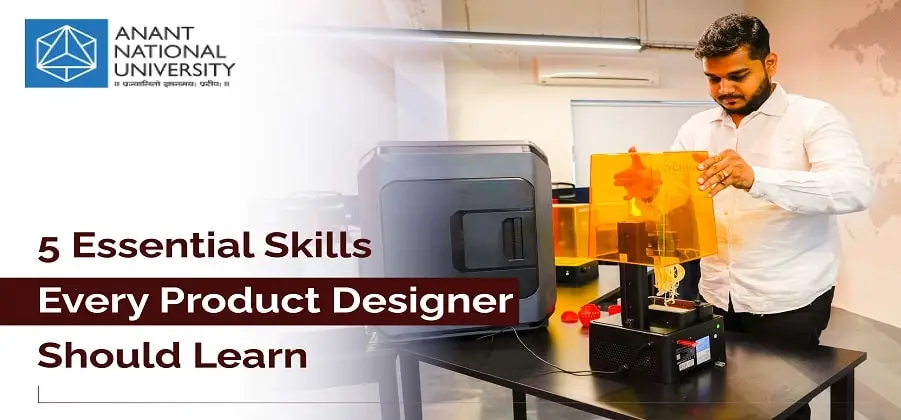

The dynamic world of product design can be an exciting field for creatives who want to design products that are functional, user-friendly, and aesthetically pleasing. This multidisciplinary field requires product designers to have a broad range of skills and knowledge in various domains to create products that solve problems, meet customer needs, and enhance their target audience’s quality of life. But what skills do product designers need?
In this blog, we will try to find out just that by discussing five essential product designer skills that everyone should learn to succeed in this competitive and evolving industry.
| Table of Contents 1. M. Des in Integrated Product Design |
One of the ways to acquire these product designer skills is to pursue a Master of Design (M.Des) in Integrated Product Design. This is a two-year, full-time, postgraduate program that integrates core subjects in product design with courses in business, entrepreneurship, and technology. The program aims to equip product designers with a holistic approach to handling complex real-life challenges to create innovative and marketable products.
To get an overview of this program that trains students in all the skills required for product designer careers, check out the table below.
| Course Name | Master of Design in Integrated Product Design |
| Level | Postgraduate |
| Duration | 2 years |
| Mode of Examination | Semester System |
| Eligibility Criteria | 50% or more in graduation |
| Admission Process | Merit + Entrance Test + Portfolio Review + PI |
According to the curriculum of the M.Des in Integrated Product Design program offered by Anant National University, some of the courses covered in this program are:
The program also provides students with opportunities to engage in collaborative projects with industry partners, government agencies, and multinational corporations. These projects allow students to apply their theoretical knowledge and product designer skills to real-world scenarios, gain valuable insights into the industry, and build their professional network.
Also Read: The Importance of Considering Ergonomics in Product Design
Some of the benefits of pursuing an M.Des in Integrated Product Design are:
Also Read: The Different Softwares that Product Designers use to Create Prototypes
Apart from pursuing an M.Des in Integrated Product Design, a career in product design also requires students to learn other essential skills for product designer to excel in their careers. Some of these skills are:
Creativity is one of the most important product designer skills as it enables them to come up with innovative solutions that can differentiate their products from the competition. Product designers rely on their creativity to explore new possibilities and challenge existing assumptions.
To enhance their creativity, product designers can:
Empathy is one of the most crucial soft skills for product designers as it helps them to design products that are user-centric and empathetic. It also helps product designers build rapport with users, elicit their pain points, motivations, preferences, etc., and create products that can enhance their experience.
To develop their empathy, product designers can:
Communication is an essential part of the product designer skill set as it helps them communicate their design concepts, rationale, and decisions to stakeholders such as users, clients, team members, managers, etc. It also helps product designers collaborate, negotiate with clients, and present their work.
To improve their communication, product designers can:
The critical thinking skills of product designers are vital as they help them to identify and solve problems, make informed decisions, and justify their design choices while also helping them avoid biases, errors, and fallacies in their reasoning.
To sharpen their critical thinking, product designers can use:
Lifelong learning is key among product designer skills as it helps them to keep up with the latest trends, technologies, and best practices in the field of product design. A zest for lifelong learning also helps product designers to enhance their personal and professional growth and development.
Product design is a rewarding career that requires people to have a diverse set of product designer skills and knowledge. By pursuing an M.Des in Integrated Product Design and learning other essential skills such as creativity, empathy, communication, critical thinking, and lifelong learning, product designers can enhance their product designer skills in creating functional products that are user-friendly and aesthetically pleasing.